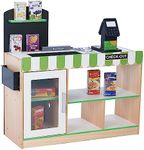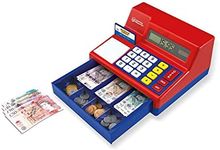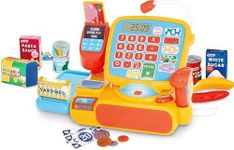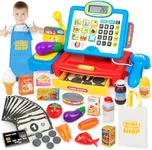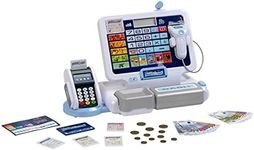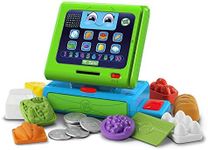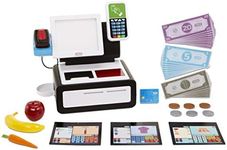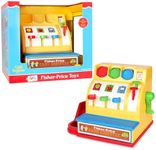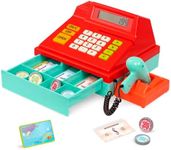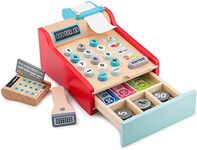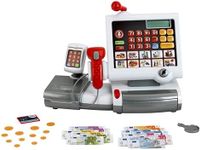Buying Guide for the Best Toy Cash Registers
Choosing the right toy cash register for your child can be a fun and educational experience. Toy cash registers can help children develop math skills, understand the concept of money, and engage in imaginative play. When selecting a toy cash register, consider the age of the child, the features that will keep them engaged, and the durability of the product. Here are some key specifications to consider when making your choice.Age AppropriatenessAge appropriateness is crucial because it ensures that the toy is suitable for the child's developmental stage. Toy cash registers are often labeled with a recommended age range. For younger children (ages 2-4), look for simple designs with large buttons and basic functions. For older children (ages 5-7), consider more complex models with additional features like a working calculator or scanner. For children 8 and up, you might want to choose a toy cash register that mimics real-life registers with more advanced functions. Always check the manufacturer's age recommendation to ensure the toy is safe and engaging for your child.
Educational FeaturesEducational features are important because they add value to the toy by helping children learn while they play. Look for toy cash registers that include features like a working calculator, play money, and coins, as these can help children practice counting, addition, and subtraction. Some models also come with a barcode scanner and pretend credit cards, which can introduce children to modern payment methods. Choose a toy cash register with educational features that match your child's learning level and interests to keep them engaged and learning.
DurabilityDurability is important because it ensures the toy can withstand rough play and last for a long time. Toy cash registers made from high-quality plastic or wood are generally more durable. Check for sturdy construction, secure battery compartments, and well-attached parts. If the toy includes electronic components, make sure they are well-protected and can handle frequent use. Consider how your child plays and choose a toy cash register that can endure their level of activity.
Interactive ElementsInteractive elements can make the toy more engaging and fun for children. Look for features like buttons that make sounds, a microphone for announcements, a conveyor belt, or a cash drawer that opens and closes. These elements can enhance imaginative play and keep children entertained for longer periods. Choose interactive elements that align with your child's interests and play style to maximize their enjoyment.
Size and StorageSize and storage are practical considerations that can affect how often the toy is used. A larger toy cash register might be more realistic and engaging but could take up more space. Smaller models are easier to store and transport but might have fewer features. Consider the space you have available and how you plan to store the toy when it's not in use. Choose a size that fits your living space and storage needs while still providing enough features to keep your child entertained.
SafetySafety is a top priority when choosing any toy. Ensure the toy cash register is made from non-toxic materials and has no small parts that could be a choking hazard for younger children. Check for sharp edges or loose parts that could pose a risk. Always follow the manufacturer's safety guidelines and choose a toy that meets safety standards for your child's age group.
